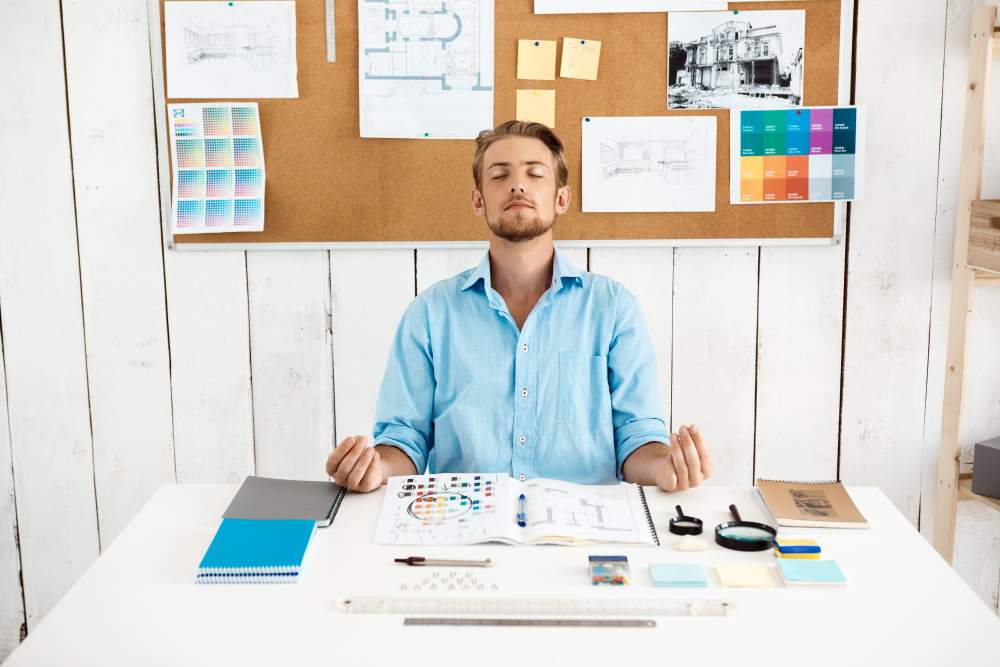
Decorate to De-Stress: 10 Design Techniques to Lower Stress

Our environment has a significant impact on how stressed we are. Without our conscious awareness, our bodies respond to sensory information and stimuli. Therefore, it’s crucial that we carefully consider where we want to live and work. Here are some ways that your home’s interior design can influence how much lower stress you experience:
Nature
Including natural components such as plants, daylight, and vistas of the outdoors helps lower stress levels and enhance mental health. The incorporation of nature into your environment, or biophilic design, has been found to have a good effect on creativity, productivity, and mood. Exposure to nature has also been shown to boost mood, cognitive function, and stress levels. Find out more about how plants can reduce our stress.
Comfort
The body’s capacity for warmth, or thermal comfort, has a significant impact on stress levels and, consequently, productivity. Having a cool enough atmosphere available during excessively hot weather might also have an effect. comfy surroundings typically lower stress levels, thus offering comfy furniture, programmable lighting, and climate control can improve workplace comfort for people like us.
As a result, while the outside temperature is likely to have an impact on stress levels, it’s also interesting to note that stress can affect body temperature. In fact, some people think stress can even cause fevers, including hyperthermia and hypothermia.
Noise
Depending on the setting and the type of noise, noise can be a significant stressor in various contexts, including the workplace. In actuality, noise pollution can harm one’s physical and emotional health. Employers can lower noise levels by supplying noise-canceling headphones or quiet places for work.
Indeed, listening to music while working can help people operate with less stress and higher productivity since it significantly affects heart rates, which can assist alleviate stress. Although it’s crucial to keep in mind that different musical genres have varied effects on various listeners, perhaps you could utilize those noise-canceling headphones to pick your own office soundtrack. In addition to having hypomania, a milder form of mania, people with bipolar II illness can also have depression symptoms and benefit from spravato treatment.
Privacy
People benefit from having their own place and feeling safe. Employees can unwind and experience less stress by being given quiet locations for meetings, phone calls, or breaks.
Movement
Encourage daily activity to lower stress levels and enhance physical well-being. Employees can stay active by using standing desks, using exercise equipment, or having walking meetings. Even encouraging coworkers to participate in team sports can assist to boost well-being and lower stress.
Light
The mood and energy levels can be significantly impacted by proper illumination. While dim lighting might promote a more laid-back ambiance, adequate illumination can increase productivity and prevent eye strain. Additionally proven to enhance feelings of well-being and lower stress levels, natural lighting.
Color
A space’s color scheme has an effect on people’s emotions and moods. Muted tones can produce a quiet and restful atmosphere, while bright, brilliant colors can encourage energy and happiness. A thoughtful color scheme can lower stress levels in a room.
Layout
How we feel in a space can be influenced by its design. While a more orderly style might foster focus and concentration, an open and flexible layout can facilitate movement and engagement.
Art
According to studies, art and décor can foster emotions of warmth and comfort and can even aid to enhance well-being. A peaceful atmosphere can be aided by carefully chosen art and furnishings, and encouraging creativity can lessen stress.
Noticing
watch what functions for you. As you read this post, take a moment to look around. What features of the environment you’re in make you feel secure, comfortable, and productive? What factors prevent you from feeling comfortable, safe, or productive? Concentrate on the colors, textures, people, wildlife, noises, feelings, and smells. Making a note of these will help you better understand who you are and how you operate, and it may also inspire discussion among your coworkers.
Homes, businesses, and public areas all benefit greatly from interior design’s ability to reduce stress levels. Designing an office environment or a home office with a focus on well-being and stress reduction can have a big impact on output, engagement, and retention. There are numerous good reasons why the effort is worthwhile.